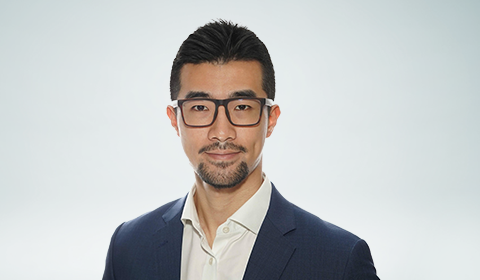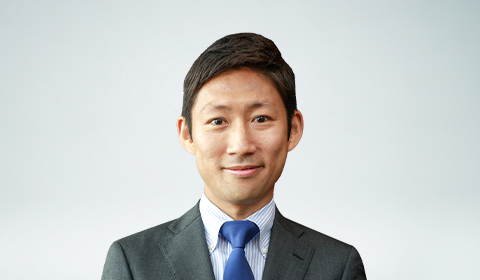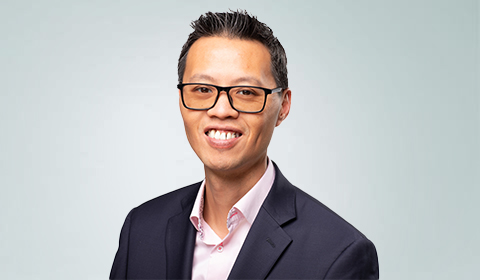Inside the Asian opportunity
Three main forces are driving the opportunity in Asia for asset-intensive longevity transactions.
Aging population
The graying of Asian societies is well documented and well understood. For example:
- By 2025, Taiwan will have what is called a super-aged society, with more than 20% of the population estimated to be older than 65. Based on an internal government forecast, by 2045 Taiwan will have the world’s third largest aging population percentage, behind Japan and Korea.
- In 2023, the proportion of the South Korean population older than 60 reached 26.7%, while the percentage older than 65 hit 18.5%.
- As of 2021, Mainland China had more than 267 million people aged 60 and above, accounting for 18.9% of its total population. By 2050, this figure is projected to reach nearly 500 million, or nearly 40% of the population.
- Japan has the world's oldest population, with more than one in four people aged 65 or older and one in 10 aged 80 or older. The median age is 48, the highest in the world.
This trend has put tremendous financial pressure on the government-run pension systems more common in the Asian market than in the West. It also has increased the role of private-sector insurers and reinsurers in addressing the growing burden created by individuals living longer during the payout phase of a pension plan.
Regulatory changes
Solvency concerns are at the heart of this emergent Asian market. Governments in several Asian nations are requiring or will require insurers to maintain more robust capital reserves to protect policyholders amid a climate of longer life expectancy.
For example:
- In January 2023, South Korea introduced K-ICS, the Korean Insurance Capital Standard. Its aim is not only to ensure that insurance companies maintain strong capital reserves but also to improve risk management practices by aligning them with global standards.
- A new regulatory framework will be implemented in Japan in April 2025. The Economic Value-based Solvency Ratio (ESR) is a measure of an insurance company’s financial soundness and capital strength and is calculated by assessing the value of an insurer’s assets and liabilities. This pending regulation is challenging Japanese insurers to create more sophisticated modeling and is expected to usher in a shift toward products with either lower guarantees or more risks applied to policyholders.
In both the coming Japanese regulations and the already-implemented requirements in South Korea, reinsurance has become an increasingly attractive option for insurance companies looking to meet more stringent solvency standards.
The desire to free up capital
One of the main drivers behind most asset-intensive longevity transactions is the desire for insurers to secure their balance sheets and free up capital to pursue growth opportunities. Those prospects are increasing as many Asian nations experience disproportionate wealth growth compared to other regions around the globe.
In January 2022, former UN Security Council president Kishore Mahbubani said we were witnessing “The dawn of the Asian century.” This economic boom is coming from not just the developed economies of the past – Japan, South Korea, Singapore, and China – but also emerging markets that include India, Vietnam, and Indonesia.
That wealth increase leads to opportunities for insurers to offer financial protection vehicles such as life insurance to a greater number of people. But to go after those opportunities, insurers must meet regulatory requirements for existing business and free enough capital to develop and distribute new products or product expansions.
Many are turning to reinsurance.
Finding the right partner
The combination of these two forces, along with other market-specific economic and demographic factors, is driving more Asian insurers to consider asset-intensive longevity transactions. Such transactions are very complex, however, and finding the right reinsurance partner is paramount for ensuring a smooth transaction.
What makes a good partner in the Asian market? The answer can be found in the following capabilities.
Global + Local
The ideal reinsurance partner for executing these transactions brings advanced expertise in biometric risk and an international investment platform that can be fine-tuned to suit local needs. In essence, the right partner is a one-stop shop with leading capabilities on both the asset and liability side of the balance sheet.
Perhaps even more important is the knowledge and experience that comes from a global reinsurer with a proven record of delivering successful financial solutions.
While new to Asia, asset-intensive longevity transactions have been executed for decades in countries such as the US and the UK, so those reinsurers with experience in more mature markets are better equipped to provide proven expertise to Asia.
It is difficult to transfer global sophistication to the Asian market, however, without a strong local presence. Asia is an extremely diverse collection of nations with their own economic drivers, regulations, and ways of doing business. For example, data privacy laws and restrictions vary widely by country in Asia, as do the nature and duration of sometimes extremely old in-force blocks. Knowledge of these differences can only be achieved through a strong local presence and is vital in setting assumptions for the target cohort.
Even cultural norms can play a significant role. For example, rather than market longevity products in Asia being directed toward those who will benefit from them, it is generally more appropriate for insurers to target their adult children or grandchildren, who have comparably more financial and technological sophistication and often are the decisionmakers in these situations. Reinsurers that understand such cultural standards can tailor transactions accordingly and collaborate with insurers on more sophisticated product offerings.
Expertise on both sides of the balance sheet
Finding a reinsurer with strong investment capabilities as well as expertise in biometric risk is crucial to successful asset-intensive longevity transactions. Key considerations include:
- Long-term expertise: Longevity transactions often involve long-term contracts, sometimes spanning decades. Reinsurers need to possess a strong balance sheet and long-term capital management practices to support long-duration obligations. Reinsurers with strong investment expertise can optimize their capital structure, allowing them to take on more asset risks without compromising their financial stability. Again, this provides benefits as well as security for the direct insurer and its policyholders.
- Risk management: Effective investment strategies help reinsurers manage the financial implications associated with longevity risk. This includes diversifying investments to ensure a stable return on assets.
Financial security
When evaluating potential reinsurance partners, it is crucial to assess their financial strength and security. A key indicator of this is a robust credit rating from reputable rating agencies such as A.M. Best, Fitch, Moody's, or S&P Global Ratings. A solid credit rating reflects the reinsurer's ability to meet its financial obligations and maintain a strong balance sheet.
Furthermore, a reliable reinsurance partner should demonstrate a commitment to the longevity risk market by allocating significant capital resources to support these transactions.
When an insurer cedes a block of business to a reinsurer via coinsurance, the reinsurer typically needs to post collateral as a form of security for the direct insurer to reduce its credit risk exposure. This ensures that the direct insurer can recuperate its reinsurance assets, even in adverse scenarios that affect the reinsurer.
Adequate capitalization not only provides a buffer against potential losses but also signals the reinsurer's long-term commitment to this specialized market segment.
What comes next
Insurers considering an asset-intensive longevity transaction – whether in Asia or elsewhere around the globe – should search for a partner with the optimal combination of global sophistication, local knowledge, and investment excellence.
The time for these transactions in Asia is now. The combination of more stringent solvency regulations and the desire to free up funds to capitalize on disproportionate regional economic growth makes Asia an ideal market for reinsurance solutions. Beyond that, emerging markets in the region solidify Asia’s status as a middle- and long-term opportunity.
To learn more about partnering with RGA on asset-intensive longevity transactions, contact us today.



f79239c7-df7c-4456-a902-7094c2742acd.jpg?sfvrsn=ad6d347e_1)


